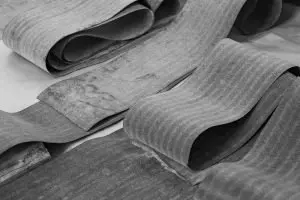Innovations are coming up with each rising dawn. These innovations are finding their way into the construction industry, touching on the various elements, such as roofs, walls, and floors. One of the developments in roofing is the Thermoplastic Polyolefin (TPO.) What is TPO? Where do you use it? How do you install it? These are the questions that might be going on in your mind. It’s best to put your worries to rest. This article will provide you with all information regarding the TPO roofing solution. Read on!
The following are the aspects to know:
Definition
Thermoplastic Polyolefin (TPO) is a roofing material made of a single-ply membrane. It belongs to the same category as Ethylene Propylene Diene Monomer (EPDM.) They’re both rubber roofing solutions.
Where To Use TPO
TPO is a rubber roofing solution. Therefore, it suffices for use on flat roofs and low-slope roofs, where rainwater drainage is an issue. With TPO, even if water stagnates on the surface, it won’t penetrate through the TPO material. Rainwater won’t find its way into your space.
You can use TPO both for commercial and residential buildings. However, it’d help to vary the thickness of the membrane for efficiency. Commercial TPO is thicker, approximately 0.08mm, than residential roofs, with 0.045mm. Why the disparity? Make Google your friend to get more info on commercial roofing.
Physical Characteristics
TPO has various characteristics that make it desirable for roofing houses. The main advantage of TPO is that it’s reflective material as a roof. It’ll reflect away the sun’s heat and rays, preventing the overheating of your building. This property is attributed to the fact that TPO is white. However, you can customize it to other colors, such as black and grey. The choice to change the color depends on the location of your building. If it’s in an area with a cold climate throughout the year, a black TPO suffices to retain as much heat as possible. The reflective nature of TPO is what makes it known as an energy-efficient roofing solution.
TPO is also flexible. This property allows you to stretch it out during installation. In no case shall it rapture due to stresses, traffic, or building expansion and contraction, increasing its longevity. TPO’s flexible nature is attributed to the rubber in its composition.
Being waterproof is another physical characteristic of TPO. The rubber nature of TPO contributes to its waterproof nature. Its installation process also contributes to this property, as you’ll see later.
Chemical Components
As previously stated, TPO is a membrane, meaning it’s made of layers. A TPO roofing is made of three layers. The first and base layers are thermoplastic polyolefin, with the middle layer being polyester-reinforced fabric.
Each contains rubber and fillers that contribute to its physical characteristics. As stated earlier, the rubber makes TPO flexible. Fillers, such as carbon fiber and fiberglass, make TPO strong.
How To Install TPO
TPO installation is an easy process with the right tools and skillset. First, you’ll need to buy the TPO membrane that vendors sell in rolls. Ensure you get the measurements right to prevent using less material. It might contribute to water penetration, which you don’t want for your building. You also require a hot-air welding gun, adhesive, or mechanical fasteners.
Start by cleaning the surface of your flat roof to remove dirt and debris. Once well-dried, it’s time to lay the TPO. Roll out the membrane and apply adhesive on your floor surface or the back of the membrane. The adhesive will ensure the TPO sticks to your roof surface. Alternatively, you can use mechanical fasteners.
Once finish with one sheet, overlap the new sheet with the preceding sheet. Ensure the overlay isn’t too far in or out. It ensures the seams bond properly without becoming the source of future issues with your TPO roofing material.
After laying out the membrane, use the hot-air welding gun to seal the overlapping sections. This gun works by providing high temperatures that melt the membranes and join to become one. With this type of jointing, there won’t be any spaces on your TPO that can cause water leakages.
The Lifespan Of TPO
Most roofing solutions have a long lifespan of close to 20 years, with others extending to 25 years. Thermoplastic Polyolefin hasn’t been left behind. Its life expectancy ranges from 15 to 25 years. The longer lifespan makes it a viable investment, and you’ll get value for your money.

However, you’ll only get this value if you install it correctly. Therefore, ensure you work with a professional contractor. It’s also good to point out that the longevity of your TPO is also dependent on other factors, such as the direct sun effect.
Conclusion
The article above has shed light on various aspects of the thermoplastic polyolefin roofing solution. You can now weigh TPO with other roofing solutions as you choose the best roofing solution for your building. Whichever solution you choose, ensure it’s the right one, and you’ve considered all the factors.

